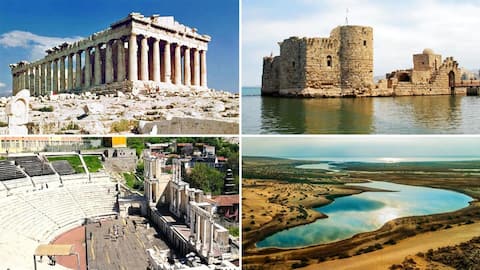Ancient marvels: A glimpse into the cities of bygone eras
What's the story
Exploring the world's historic cities is like turning the pages of an enormous history book. Every city tells stories of victories, setbacks, cultural breakthroughs, and tales of the human spirit. The ruins of ancient civilizations stand as everlasting witnesses to the rich tapestry of human history among the contemporary cityscape and bustling urban settings. Check out five of the world's oldest towns.
Town 1
Sidon, Lebanon
Situated to the south of Beirut, Sidon, Lebanon, is believed to have been inhabited as early as 4,000 B.C., while some historical assessments suggest an even earlier habitation around 6,000 B.C. It is noted for visits by historical figures like Alexander the Great, Jesus Christ, and St. Paul. Today, it stands as one of Lebanon's largest cities and hosts the bustling port of Sayhad.
Town 2
Plovdiv, Bulgaria
With a history spanning over six millennia, Plovdiv is among the oldest cities in Europe. The ancient village on Nebet Tepe Hill has been inhabited by humans since 4000 BC, according to excavations. The city served as a major hub for the Thracian, Macedonian, Ottoman, and Persian cultures. Plovdiv is currently Bulgaria's second-biggest city and a developing tourism destination.
Town 3
Athens, Greece
With its earliest human habitation dating back to about 5,000 B.C., Athens, the capital city of Greece is the dominant force in the Attica region. This city is also the cradle of Western civilizations and the ancient home of philosophy. Athens boasts an ancient habitation, preceding the era of some of the most well-known Greek philosophers like Socrates, Plato, and Aristotle.
Town 4
Rayy, Iran
With evidence indicating that its residents date back to 6,000 B.C., Rayy is the oldest city in Tehran province and among the oldest in the world. Enshrined in the Avesta, the ancient texts of Zoroastrianism, the city has a rich historical background. The city was taken over by Arabs in 641 AD, and in 1220 the Mongols came dangerously close to destroying it.
Town 5
Faiyum, Egypt
Faiyum was a substantial oasis in ancient Egypt, renowned for its fertility and proximity to a branch of the Nile River. The region is thought to have been inhabited by humans before 7200 B.C., with its initial agricultural town established around 5200 B.C. Eventually, numerous towns and settlements were constructed in the area, notably known for the mummy mask collection called the Fayum Portraits.
